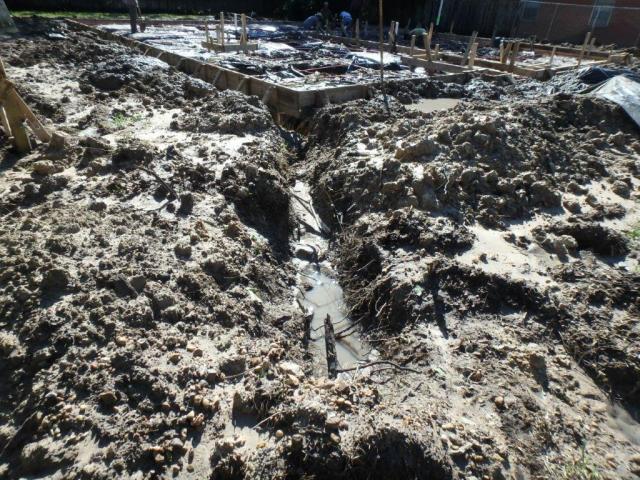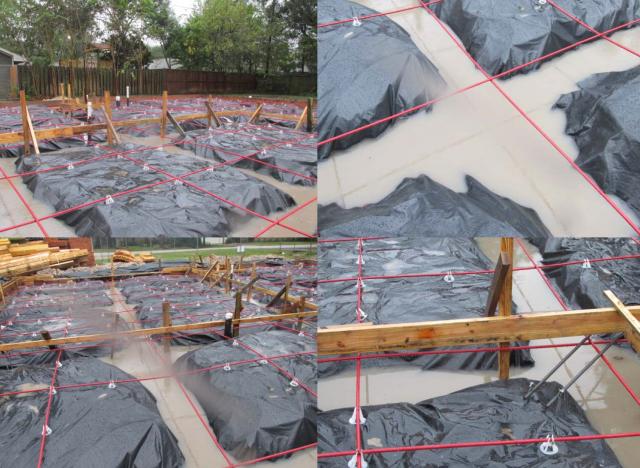“What is a relief trench?” you ask. A relief trench is a ditch installed as part of site preparation for construction of a slab on grade foundation. A relief trench is intended to drain water from the forms to a safe location in the event of rain before concrete can be placed. The next logical question is, “Why is it important to drain the water from the forms?” In our area, a slab on grade foundation is constructed by digging trenches into the soil that will eventually be filled with reinforcement and concrete to form the stiffening beams and slab of a foundation. This results in foundation having a final shape that resembles a waffle, if you could view the foundation from its underside. The trenches creating the beams are susceptible to filling with water and holding it for a long time and water standing in these trenches can damage the form preparations in several ways.
- Standing water can result in caving of the sides of the trenches, causing the soil at the sides to slough to the bottom covering the reinforcement and reducing the depth of the beams. This reduces strength and stiffness. This condition must be corrected before placement of concrete. Although cleaning of the beams without removal of reinforcement is possible if sloughing is not significant, in severe cases the reinforcing will have to be removed to allow the beams to be re dug and to ensure proper placement of the reinforcement.
- A sand layer is often added to the surface of the soil at the slab as recommended by the geotechnical engineer. If water stands to near the top of the beams, it can liquefy the sand layer at the slab, damaging this smooth layer and possibly affecting the performance of the foundation. This can require removal of the reinforcement and moisture barrier to allow the layer to be replaced.
- Saturation of the soil supporting the slab between the beams will make this soil unstable until it dries. Walking these areas when wet and soft during placement of concrete will result in undesirable roughness in the surface of the supporting soil, allow displacement of the sand layer, or allow reinforcement to be pushed out of place undetected, possibly affecting the long-term performance of the foundation.
- Saturated soil can also result in a failure of the interior drop forms or perimeter forms, causing them to warp and drop from their intended positions. This would require reforming, but may not be detected if it occurs during placement of concrete.
 Preventing these concerns is as simple as digging one or more relief trenches when the beam trenches are dug. The relief trenches should be dug to at least the same depth as the beam trenches. They should extend to a location where water can be safely discharged with a continuous downward slope. This will limit the amount of water that will collect in the forms and the subsequent damage that can occur. A simple relief trench could reduce a 2-week delay to a few days. In our climate where rain is common and can occur for several days, this can improve overall quality and save the builder money.
Preventing these concerns is as simple as digging one or more relief trenches when the beam trenches are dug. The relief trenches should be dug to at least the same depth as the beam trenches. They should extend to a location where water can be safely discharged with a continuous downward slope. This will limit the amount of water that will collect in the forms and the subsequent damage that can occur. A simple relief trench could reduce a 2-week delay to a few days. In our climate where rain is common and can occur for several days, this can improve overall quality and save the builder money.


Recent Comments